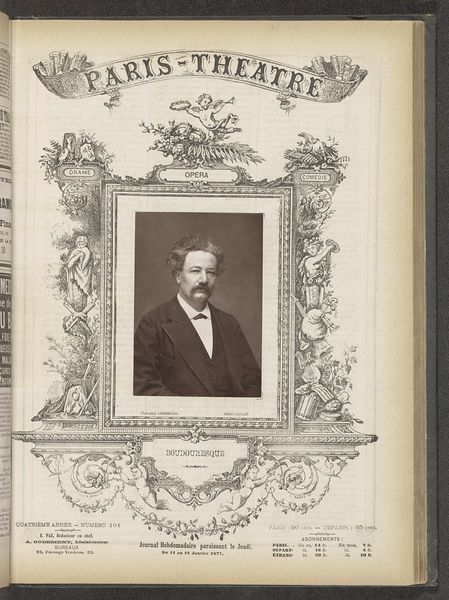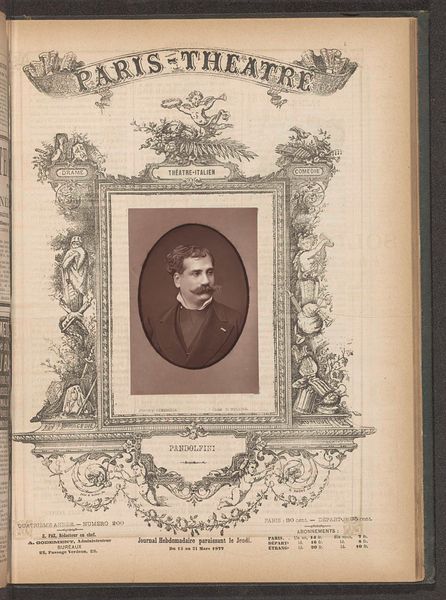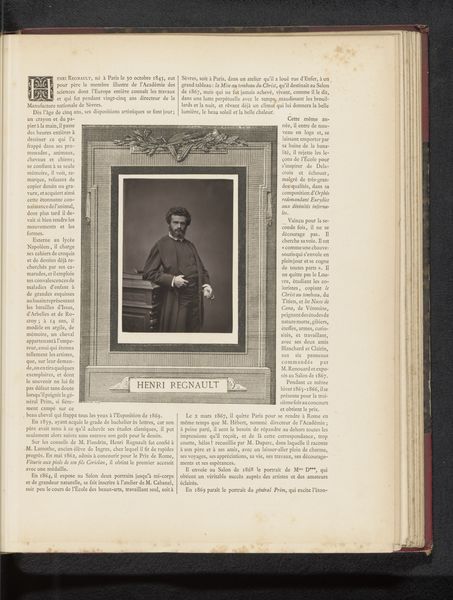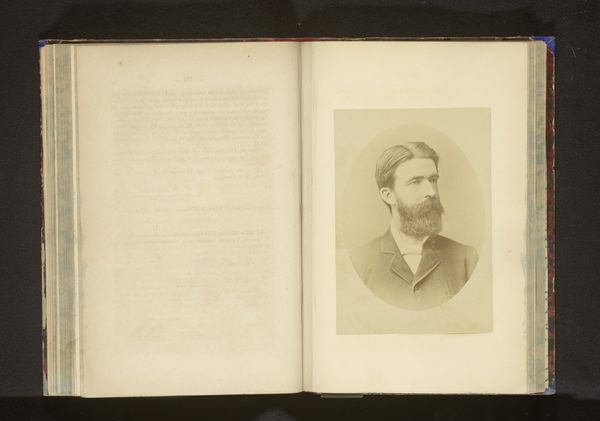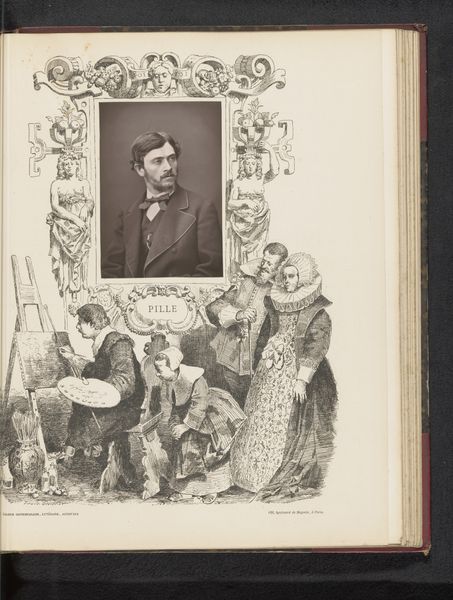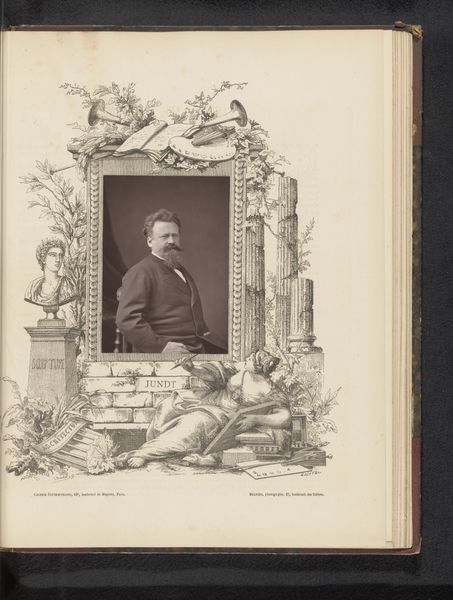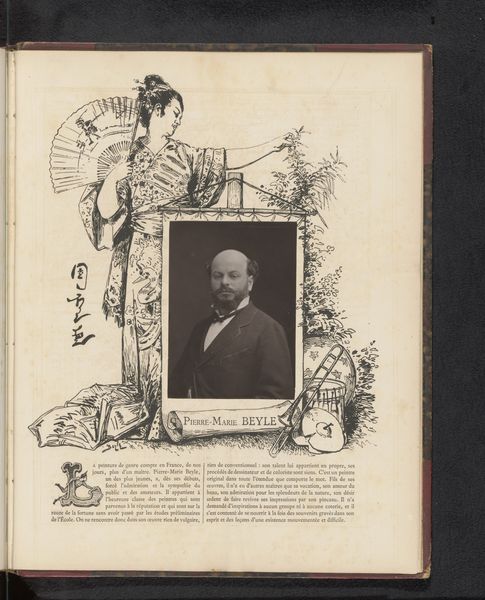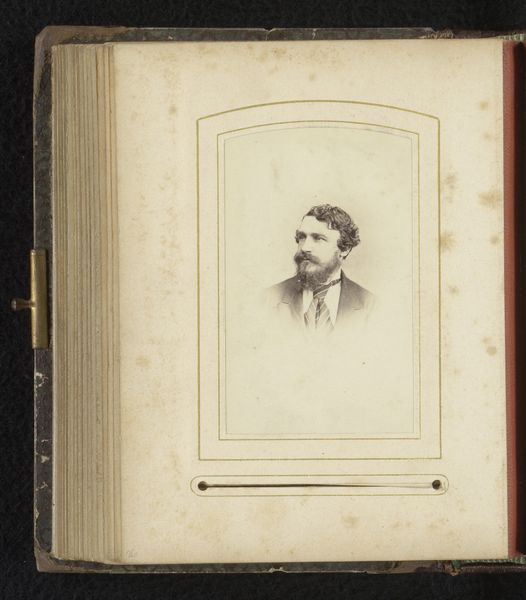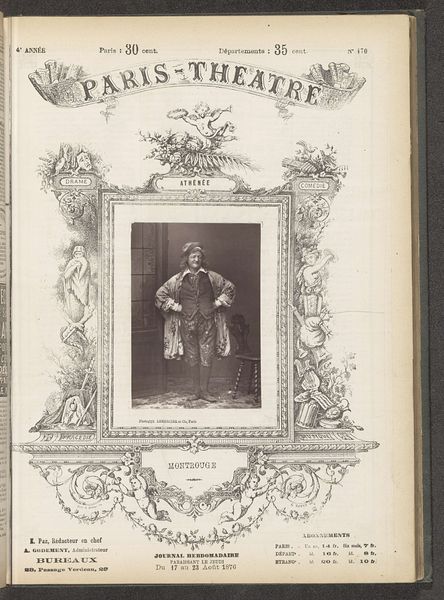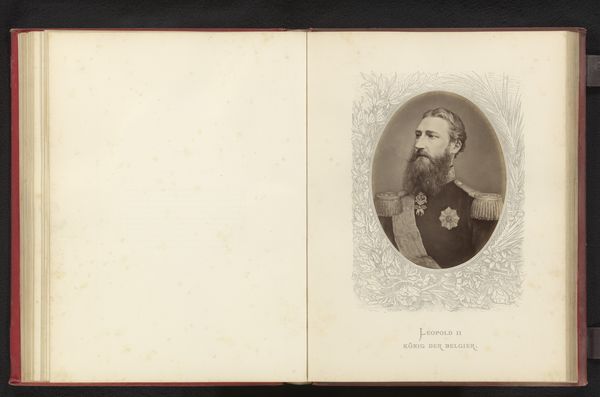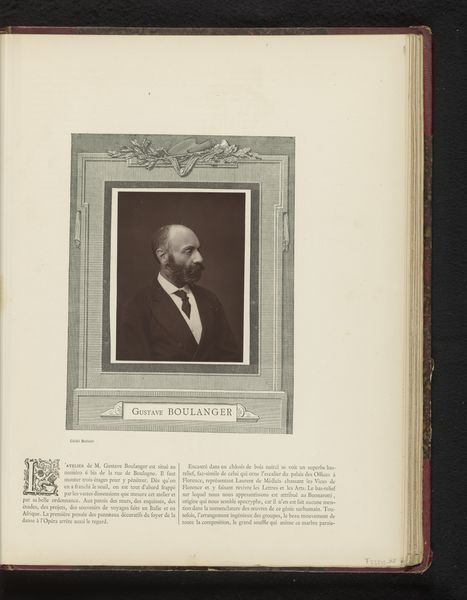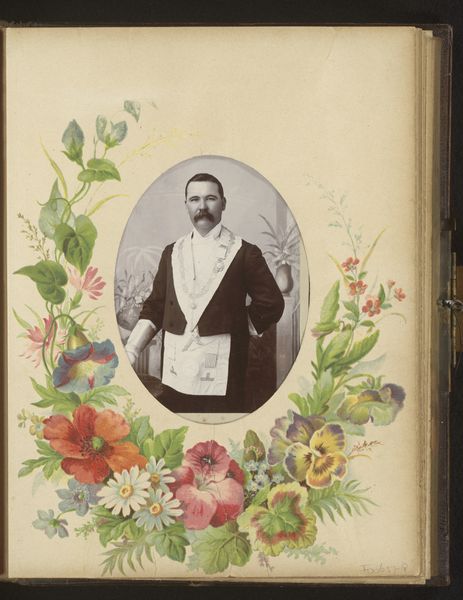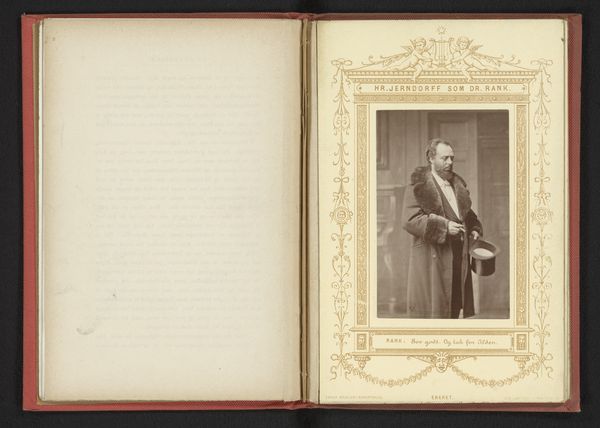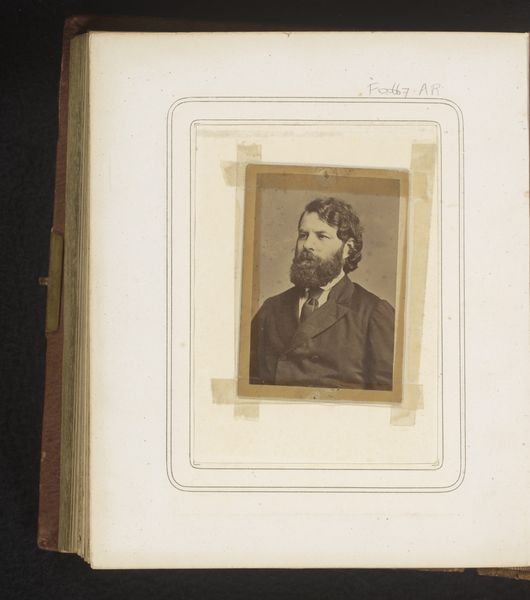
photography
#
portrait
#
aged paper
#
toned paper
#
light pencil work
#
sketch book
#
photography
#
personal sketchbook
#
pen-ink sketch
#
pen and pencil
#
pen work
#
sketchbook drawing
#
academic-art
#
sketchbook art
#
realism
Dimensions: height 300 mm, width 223 mm
Copyright: Rijks Museum: Open Domain
Editor: Here we have a page from a sketchbook, "Portret van Jacques-Léonard Maillet," dating from before 1876. It seems to be a photograph framed by an intricate pen and ink drawing. It has such an air of formality, yet also feels intimate, like a private glimpse into someone’s life. How do you interpret this work, especially considering it's a portrait embedded within a larger artistic context? Curator: It strikes me as a deliberate negotiation between representation and self-construction. The photographic portrait places Maillet within a specific, perhaps even bourgeois, reality, but the elaborate allegorical frame transforms it. The allegorical elements - the angelic figure and classical statues - actively rewrite Maillet’s identity. What's he meant to represent? Could this juxtaposition point to the tensions inherent in portraiture itself, between capturing a likeness and constructing an image? What is he trying to tell us about himself or perhaps what society expected of him? Editor: That’s a really interesting point about self-construction. The figure is a portrait but also an idealized figure. Curator: Exactly! The addition of the statues is very pointed. This era had a complex relationship with its classical inheritance, often appropriating it to legitimize contemporary social structures. Maillet is being framed, quite literally, within that inheritance. Editor: So, the classical frame acts as a kind of visual rhetoric? Curator: Precisely! It elevates him, connects him to a lineage of power and intellect. How does that sit with you in the context of understanding class and identity? Does the photographic portrait disrupt or reinforce that narrative? Editor: It adds a layer of realism, maybe even vulnerability, which complicates the idealized image. I guess, together, they show both the man and the myth he—or society—wanted to create. Curator: Indeed. And perhaps, understanding that negotiation helps us see the complex forces at play in shaping identity even today. Editor: Absolutely! It makes you wonder about all the hidden layers in even the simplest-seeming portrait.
Comments
No comments
Be the first to comment and join the conversation on the ultimate creative platform.
